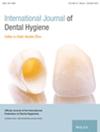Salivary Physicochemical Parameters in Relation to Dental Caries and Adiposity Status
Abstract
Objectives
The objective of this study was to investigate the correlations between salivary physicochemical parameters, adiposity, and caries indices in Hong Kong adolescents.
Methods
A total of 921 adolescents aged 12–15 years from four randomly selected local secondary schools were invited to participate in this cross-sectional study. Dental examinations including the number of decayed, missing, and filled teeth (DMFT), salivary physicochemical parameters, and anthropometric measurements were performed. The Mann–Whitney U test was used to examine the differences in salivary parameters and adiposity indices between participants with different levels of caries experience. Correlations between adiposity indices, salivary parameters, and caries indices were examined using Spearman's correlation coefficients.
Results
The participation rate was 83.6%. After exclusion, data from 695 adolescents were analysed. Adolescents with high caries experience (DMFT ≥ Significant Caries Index [SiC Index]) had significantly higher weight-to-height ratio (W/H) and waist circumference (WC) z-scores and lower unstimulated and stimulated salivary flow rates and buffering capacity than those with DMFT < SiC Index. Except for body mass index z-score, the other adiposity indices were negatively correlated with at least one salivary physicochemical parameter (stimulated salivary flow rate or salivary buffering capacity) (rs ranged from −0.078 to −0.132). After adjusting for age and sex, decreased stimulated salivary flow rate was associated with higher body fat percentages, WC, and waist-to-height ratio z-scores, whereas low salivary buffering capacity was associated with higher W/H and WC z-scores.
Conclusion
There is a potential link between adiposity indices and certain salivary physicochemical parameters that are implicated in the aetiology of dental caries.

 求助内容:
求助内容: 应助结果提醒方式:
应助结果提醒方式:


